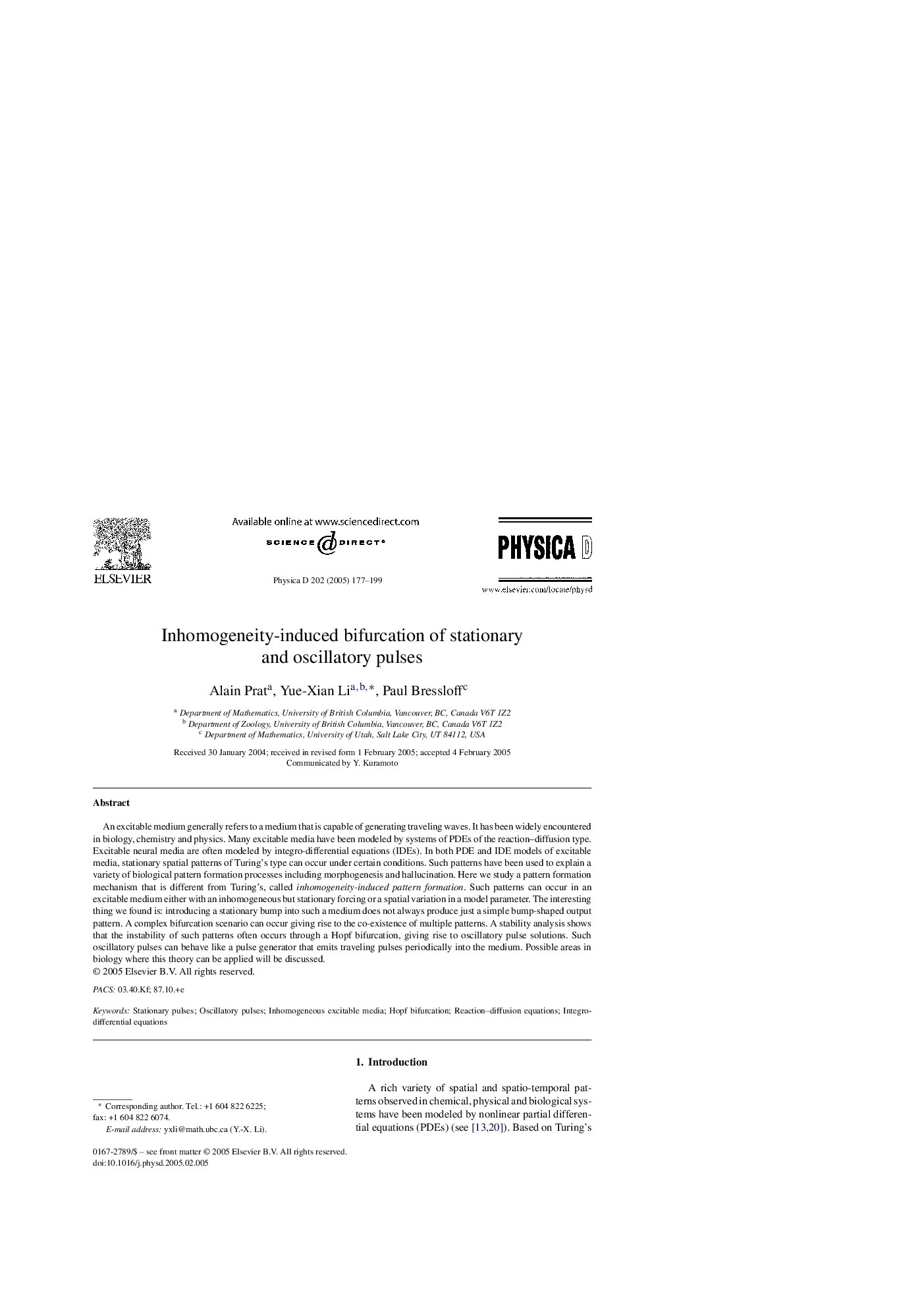| Article ID | Journal | Published Year | Pages | File Type |
|---|---|---|---|---|
| 9877698 | Physica D: Nonlinear Phenomena | 2005 | 23 Pages |
Abstract
An excitable medium generally refers to a medium that is capable of generating traveling waves. It has been widely encountered in biology, chemistry and physics. Many excitable media have been modeled by systems of PDEs of the reaction-diffusion type. Excitable neural media are often modeled by integro-differential equations (IDEs). In both PDE and IDE models of excitable media, stationary spatial patterns of Turing's type can occur under certain conditions. Such patterns have been used to explain a variety of biological pattern formation processes including morphogenesis and hallucination. Here we study a pattern formation mechanism that is different from Turing's, called inhomogeneity-induced pattern formation. Such patterns can occur in an excitable medium either with an inhomogeneous but stationary forcing or a spatial variation in a model parameter. The interesting thing we found is: introducing a stationary bump into such a medium does not always produce just a simple bump-shaped output pattern. A complex bifurcation scenario can occur giving rise to the co-existence of multiple patterns. A stability analysis shows that the instability of such patterns often occurs through a Hopf bifurcation, giving rise to oscillatory pulse solutions. Such oscillatory pulses can behave like a pulse generator that emits traveling pulses periodically into the medium. Possible areas in biology where this theory can be applied will be discussed.
Related Topics
Physical Sciences and Engineering
Mathematics
Applied Mathematics
Authors
Alain Prat, Yue-Xian Li, Paul Bressloff,
